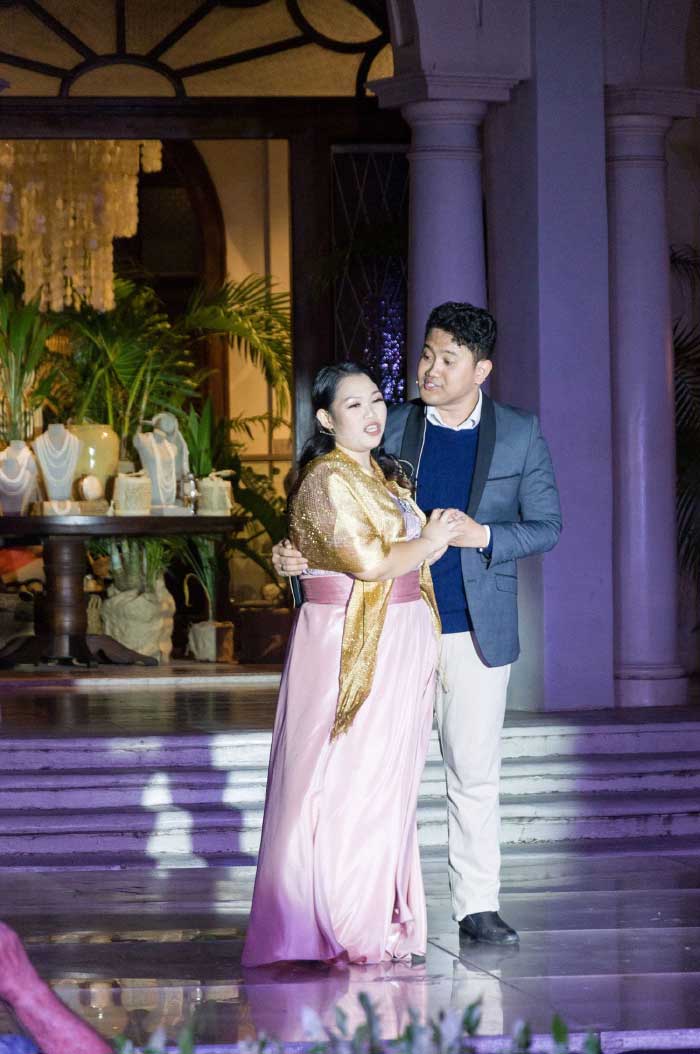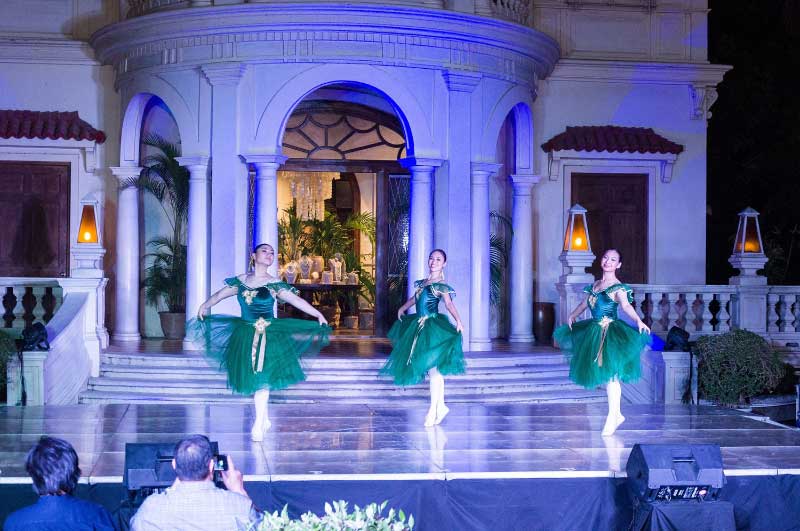By John Anthony S. Estolloso
(The author is a humanities and language teacher in one of the private schools in the city. Photos courtesy of Blackbox.)
Two glorious evenings of classical music, ballet, and opera: rarely does Iloilo City encounter such a rich display of local talents on one stage in celebration of the arts. Last February 25 and 26 witnessed the coming together of musicians and singers from the University of San Agustin’s Conservatory of Music and the corps of dancers of the Claravall-Gonzales School of Classical Ballet, to regale Ilonggos with staples from the great masters.
The evenings were All About Klasikal (yes, such was the title of the musical programme). Far from the usual convention of concert halls is the open air and public space performances, marked by spells of spiels delivered in the vernacular: it was classicism rubbing elbows and exchanging jokes with the contemporary audience.
It is with that understanding that we sat through the twilight (the writer was present that Sunday evening at the Yusay-Consing Mansion) amidst the lively chatter of young people at the background, the succulent smells of barbecue and pizza wafting through the audience, and the glorious music punctuated by the tolling of the bells and the orisons of both priest and congregation of nearby Molo Church, recalling the old Castilian days when stately mansions were built bajo de campana. In the fading of that day, the classic met the contemporary.
Then again, the moving power of opera rests on its musicality and drama, the contemporaneous relevance of which far exceeds the times and contexts with which these were composed and performed. Verismo does not rely on design and interpretation alone; it is anchored more on the truthful and sentimental pull that tugs on the heartstrings of the performer, the listener, and the critic, regardless from which culture, time period, or social circle they may belong.
Think about it: No matter how many times we hear the Flower Duet from Delibes’ Lakme or the teary though tongue-in-cheek O mio babbino caro from Puccini’s triptych, we always fall in love sadly – or at least fall in love with the idea of falling in love – regardless of the preposterous plotlines of their stories.
Our modern sensibilities can snigger at the chauvinism of Verdi’s La donne e mobile or roll our eyes at the lovers’ bohemian infatuation in Puccini’s O soave fanciulla but it does not detract from the fact that we would have given heart and soul to have proclaimed the same spirit and joie de vivre of humanity (or inhumanity, for that matter) had we been in their make-believe world.
For those with some smidgen of understanding of other languages, we can coyly cover our smirks when Mozart’s avian duet from The Magic Flute slyly hints on procreation most fowl (pun intended). And who does not get all warm and woozy when champagne glasses start clinking to the waltzing strains of the Brindisi from Verdi’s La Traviata – or get teary-eyed in hopeful aspiration when the tenor hits the triumphant high C of Puccini’s Nessun dorma?
One need not be a polyglot to appreciate opera: for whatever meanings the audience may have gleaned or lost during those evenings fraught with melodies of bygone times and lyrics sung in foreign tongues, the transcendent beauty of it all was what endures – the same endurant idea that, to quote a former student of mine, ‘what is beautiful is beautiful, no matter what period it was made or for whom it was intended.’
*****
Violinist Miguel Davao was in his element. I have heard him perform Antonio Molina’s Hating Gabi in many a sedate and sober stage but never was more verve and vibrance given to a midnight nocturne: the composition found sunny brilliance in the pizzicatos and abrasive double-stops that his violin endured that evening. To further embellish the depth in the delivery was the pas de deux rendered exquisitely by dancers Sam Failla and Chino So: very evocative of a midnight tryst from a certain Shakespearean play.
On that note, we accede that ballet is the art of dance transformed into a narrative and a pedagogy: one does not become a danseuse overnight and the months of training especially manifested itself that evening with the grace and intensity of Ms. Nila Claravall-Gonzales’ corps de ballet. Selections from Tchaikovsky’s well-loved The Nutcracker (and some waltzes whose titles I cannot recall) come to life once more with sprite-like gaiety and color: the storytelling may have seemed subdued but the music and the dance stay – as they should.
Highlights of the evening would be scenes from Bizet’s Carmen and Verdi’s La Traviata making their entrance as any grand opera would have it: in full company, corps de ballet, and chorus. One can smile and close one’s eyes with contented satisfaction as veteran singers Jomel Garcia, Joebert Anuran, Yves Adrian Gabasa, Amabelle Pamocol-Castro, and Wynn Villanueva belted out familiar arias and duets to the backdrop of a costumed ensemble and sashaying dancers, lending a dramatic flair to a musical programme already brimming with talent and pageantry.
Needless to say, the performances gave credence to the musical expertise and depth with which the entire thing was envisioned. Mr. Bimbo Muyuela and Mr. Argiel Resurreccion at the helm and at the piano did justice to the musical legacy and standard that the university’s conservatory has always maintained – and for that, the Ilonggo audience is most appreciative.
At this point of this lengthy adulation for classical music, we arrive to the idea that underneath the razzle dazzle, spectacle is essentially the heart of opera. More than just the sheer exhibition of music and lyric poetry is the incorporation of visual art and architecture, fashion, narrative and storytelling, and of course, dance in that one grand artform. All these we have that evening – the colors, the dancing, the dramatics, the architecture – for what better design can play setting to the spectacle than the stately Molo Mansion, which I have no doubt have seen many a similar sight or soirée in centuries past?
To end, I would like to introduce the reader to a bit of historical nuance. German composer and littérateur Richard Wagner conceived a unified exhibition of all artforms in one magnificent output. Gesamtkunstwerk, ‘a total work of art’, he called it – and to his artistic sensibilities, opera is the manifestation of this totality of art. All About Klasikal just made sure that the Ilonggos have not lost this artistic experience and feeling, fledgling it may be.
And yes, our public spaces will see more of these soon. We can excuse the technical mishaps: one can always lose a microphone in mid-performance but never the appreciation nor the artistry. The show goes on – l’art pour l’art!





























